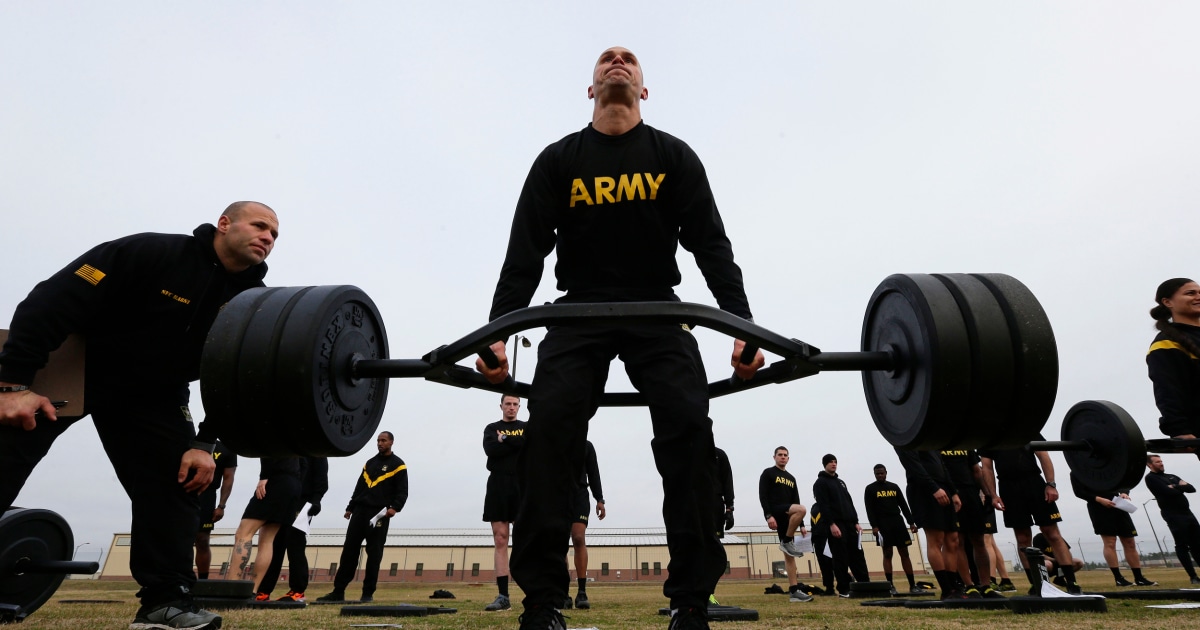
The U.S. Army is planning to replace its antiquated fitness exam with a more rigorous model designed to better prepare soldiers for the demands of modern warfare.
The new exam has been tested for two years and is planned to be officially rolled out in March 2022. It replaces the 40-year-old Army Physical Fitness Test, which tested soldiers on their ability to do two minutes of situps, two minutes of pushups and a 2-mile run.
The two-hour Army Combat Fitness Test 3.0 (ACFT) evaluates movements that better parallel the demands of on-the-ground combat, including rescuing injured personnel and loading equipment, according to Lt. Col. Gabriel Ramirez, an Army spokesman.
“There are a lot of rigors that are involved with being a soldier and being a soldier in combat,” Ramirez said. “The ACFT is just better for the soldiers as far as being able to perform their duties on the battlefield.”
It consists of six exercises: a medicine-ball throw, hand-release pushups, deadlifts, a 2-mile run, sprint-drag-carry exercises, and leg tucks or planks.
Ramirez said the new test better assesses strength, coordination and cardiovascular endurance, in addition to encouraging “a different mindset of training.” He said that more activities and more intensive activities call for more rigorous training, which might better prepare soldiers for the job.
“When I first began preparing for the ACFT, it was a huge change from training for … the basic pushups, situps and run,” Sgt. First Class Nakelia Ramey said in a video published on the Army’s website. “I knew that the same routine wasn’t going to work with the ACFT.”
Ramey described incorporating resistance bands and other equipment into her exercises, something that’s unnecessary when training to do pushups or situps. She also discussed retraining her knees after an injury and her struggles with the deadlift.
“Physical fitness is not new to soldiers, so the ACFT may be a challenge, but we are able to get through it,” Ramey said.
He said the ACFT has been in use for years to collect data on its effectiveness but has not been used as a performance evaluation yet.
The latest version, ACFT 3.0, is the most recent data-informed modification. The most prominent change, compared to the 2.0 version, includes the plank as a substitute for the leg tuck to address the higher fail rates among women with the leg tuck. The plank and the leg tuck both evaluate core strength, army officials said, and would be considered the same in terms of scoring.
However, more than half of women are still failing the new exam, according to Army Forces Command data published on military.com. Women in the military have expressed concern that the Army would prioritize physical strength over leadership qualities or technical skills necessary in a high-tech age and might unintentionally marginalize women in the Army and underuse people, in general, with useful skills outside of fitness, The Washington Post reported last year.
“I think most folks, most individuals, with proper training can pass the test,” Ramirez said.
Another possible change to address the higher fail rate among women would be the use of a performance-tier program that would take gender into account, Army officials said.
“There will continue to be discussion,” Ramirez said. “I think the big thing for us is that we need to get data to make informed decisions.”
Source: | This article originally belongs to Nbcnews.com










